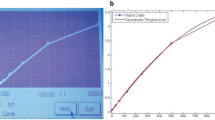Abstract
The present work showcases the distressing picture of oxidative stress in the cardiac, hepatic and renal tissues, in an experimental model based on early phase atherogenesis. The protection rendered by LMWH intervention forms part of the same study. Male Wistar rats of 140 ± 10 g were categorized as four groups. One group served as untreated control and another as LMWH drug control group. Two groups were fed a hypercholesterolemic atherogenic diet (rat chow supplemented with 4% cholesterol, 1% cholic acid and 0.5% thiouracil; CCT diet) for 2 weeks; one of these groups received LMWH treatment of 300 μg/day/rat for 7 days. The biochemical index of tissue lipid peroxidation (LPO) was assessed in terms of MDA formation. Heart, liver and kidney tissues of CCT-diet fed rats showed significantly elevated levels of LPO. In the early phase atherosclerotic group, we observed abnormal changes in the activities/levels of tissue enzymic (superoxide dismutase, catalase and glutathione peroxidase) and non-enzymic (reduced glutathione, ascorbate and α-tocopherol) antioxidants. We report normalized LPO levels and antioxidant defences in the atherogenic rats treated with LMWH. Thus the present study highlights the hepatic, cardiac and renal oxidative changes induced by experimental atherogenesis, and the protection rendered by LMWH treatment in atherosclerotic cardiovascular conditions.
Similar content being viewed by others
References
Halliwell B, Gutteridge JMC: Free radicals, other reactive species and disease: Atherosclerosis. In: Free Radicals in Biology and Medicine. Oxford University Press, New York, USA, 1999, pp 625-638
Engelberg H: Heparin and the atherosclerotic process. Pharmacol Rev 36: 91-110, 1984
Engelberg H: Actions of heparin in the atherosclerotic process. Pharmacol Rev 48: 327-352, 1996
Green D, Hirsh J, Heit J, Prins M, Davidson B, Lensing AWA: Low molecular weight heparin: A critical analysis of clinical trials. Pharmacol Rev 46: 89-109, 1994
Hogberg J, Larson RE, Kristoferson A, Orrenius S: NADPH-dependent reductase solubilized from microsomes by peroxidation and its activity. Biochem Biophys Res Commun 56: 836-842, 1974
Devasagayam TPA: Lipid peroxidation in rat uterus. Biochim Biophys Acta 876: 507-514, 1986
Marklund S, Marklund G: Involvement of the superoxide anion radical in the autoxidation of pyrogallol and a convenient assay of superoxide dismutase. Eur J Biochem 47: 469-474, 1974
Sinha AK: Colorimetric assay of catalase. Anal Biochem 47: 389-395, 1972
Rotruck JT, Pope AL, Ganther HE: Selenium: Biochemical role as a component of glutathione peroxidase purification and assay. Science 179: 588-590, 1973
Moron MS, Defierre JW, Mannervik B: Levels of glutathione, glutathione reductase and glutathione-S-transferase activities in rat lung and liver. Biochim Biophys Acta 582: 67-78, 1979
Omaye ST, Turnball JD, Sauberlich HE: Selected methods for the determination of ascorbic acid in animal cells, tissues and fluids. Meth Enzymol 62: 3-11, 1979
Baker AF, Frank G: Estimation of vitamin E in tissues. In: Bollinger (ed): Dunnshchict, Chromatographic in laboratorium ‘Hand brich’. Springer-Verlag, Berlin, Germany; pp 41-52, 1951
Rogers KA, Karnovsky MJ: A rapid method for the detection of early stages of atherosclerotic lesion formation. Am J Pathol 133: 451-455, 1988
Peric-Golia L, Peric-Golia M: Aortic and renal lesions in hypercholesterolemic adult, male, virgin Sprague-Dawley rats. Atherosclerosis 46: 57-65, 1983
Keane WF: Lipids and the kidney. Kidney Int 46: 910-920, 1994
Kasiske BL, O'Donnell MP, Schmitz PG, Kim Y, Keane WF: Renal injury of diet-induced hypercholesterolemia in rats. Kidney Int 37: 880-891, 1990
Ashakumary L, Vijayammal PL: Effect of nicotine on antioxidant defence mechanisms in rats fed a high-fat diet. Pharmacology 52: 153-158, 1996
Rodriguez-Porcel M, Lerman A, Best PJ, Krier JD, Napoli C, Lerman LO: Hypercholesterolemia impairs myocardial perfusion and permeability: Role of oxidative stress and endogenous scavenging activity. J Am Coll Cardiol 37: 608-615, 2001
Tsai AC: Lipid peroxidation and glutathione peroxidase activity in the liver of cholesterol-fed rats. J Nutr 105: 946-951, 1975
Geller RL, Ihrcke NS, Maines J, Lindman BJ, Platt JL: Loss of heparan sulfate proteoglycans as a manifestation of cellular immunity in vivo and in vitro. Transplant Proc 25: 144-145, 1993
Grant D, Long WF, Williamson FB: Pericellular heparans may contribute to the protection of cells from free radicals. Med Hypotheses 23: 67-71, 1987
Dzieciuchowicz L, Checinski P, Krauss H: Heparin reduces oxidative stress in the postoperative period. Med Sci Monit 8: CR657-CR660, 2002
Liu Z, Perlin AS: Evidence of a selective free radical degradation of heparin mediated by the cupric ion. Carbohydr Res 255: 183-191, 1994
Grant D, Long WF, Williamson FB: A potentiometric study of the interaction of heparin with metal cations. Biochem J 285: 477-480, 1992
Ross MA, Long WF, Williamson FB: Inhibition by heparin of Fe-catalysed free radical peroxidation of linolenic acid. Biochem J 286: 717-720, 1992
Author information
Authors and Affiliations
Rights and permissions
About this article
Cite this article
Deepa, P., Varalakshmi, P. Salubrious effect of low molecular weight heparin on atherogenic diet-induced cardiac, hepatic and renal lipid peroxidation and collapse of antioxidant defences. Mol Cell Biochem 254, 111–116 (2003). https://doi.org/10.1023/A:1027324318973
Issue Date:
DOI: https://doi.org/10.1023/A:1027324318973




